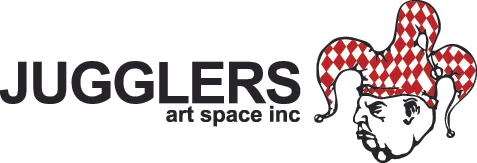'Capturing the Spirit' Exhibition Review by Claudia Francis
/In our urbanised fast paced lives, it seems commonplace to lose touch with what fundamentally drives us as individuals, something that art today broadly and continuously challenges. German artist Hans Hofmann once said‘Art is to me the glorification of the human spirit, and as such it is the cultural documentation of the time in which it is produced’.
This quote seemed fitting when viewing last week’s group exhibition that, although diverse in ideas and media, encapsulated a common insight exposing platforms of thought around the equivocal concept of ‘the spirit’ in relation to the time and place in which we live. The works wonderfully embraced our senses as viewers were invited to touch, smell, view and reflect on the works of three award winning visual art graduates from TAFE Queensland- Felicity Scarce, Alex Freitas and Jane McGeough.
On entering Jugglers front foyer, I was suddenly immersed in an energetic atmosphere, where gallery-goers chatted, drank and absorbed the wonderful art that surrounded them, an elevated contrast to the dreary night outside.
At first I found myself drawn to the minimalistic pencil on paper sketches by Felicity Scarce. Speaking with the artist the previous day, I found that her work tackles notions of ritualism and shrines that took the form of minimal intricate drawings in composition with tiny ceramic bowls. These delicate ceramics acted as vessels for the corresponding plant or fruit that was depicted from the drawings above. The scale of the work seemed to function as a way to draw the audience close where the aromas of these medicinal plants enveloped the senses. This element struck me as a lured call for intimacy that could potentially trigger certain associations with the ephemeral content. For me, the scent drew connections to homely environments, a comforting reminder of one’s sacred place where the spirit can be at its most invigorated. This everyday magic is what seems to drive Scarce’s work. The drawings also functioned as a meditative process for the artists through the method of “dotting” the forms onto the paper, a long and tedious progression. I see this work as a refreshing way to tackle the chaotic- by offering a work full of personal reflection that finds the beauty even in the simplest of things.
After treating myself with a drink, I then found myself hovering around the main gallery space that showcased a juxtaposition of drawings, paintings and sculpture by other artists Alex Freitas and Jane McGeough. The works seemed to muster reflection, intuitive demeanor and the evocation of beauty.
As I reflected upon Frietas work, what became evident were the consistent strong aesthetic lines and geometrical patterns, an element that was influenced by the artist’s background in architecture and graphic design. However this theme could possibly be seen as a revolt against the inherent functionality in these areas; instead the work evidently embraced opposing notions of spontaneity, intuition and fluidity. This autonomous platform also hints towards contextual elements of his life and surroundings, for example – maps of people and things were illustrated, his urban surroundings were depicted through screen prints and even representations of his chickens were all contextually exposed and simultaneously hidden in the obscure appealing forms. This intuitive element gave the work a sense of freedom through the unfiltered and the unknown forms to further portray a sense of autonomy and spirit.
As I shifted my gaze from the uninhibited expressions of Freitas, I reflected on the lively paintings by McGeough. The series entailed multiple portraits of influential Australian activists. The series seemed to seek a continuing dialogue around the issues that faces indigenous Australians. When viewing these works I was struck by the intense expressions on each face that gazed down upon me. The works captured a real animated quality of emotion through vibrant colour and written text on the wall to further continue dialogue around the issues that indigenous people face. These inspirational works sought to capture the spirit of each individual portrayed, a beautiful collection to reflect on the time and place we live in.
This exhibition acts as a reminder of where we have been and where we are going. Art serves a nonpractical role in our lives, but that does not mean that it is not vital or necessary. These works act as a reminder of personal expression and the importance of one’s individual identity in relation to our collective identity as a culture. The insight and evoking beauty that contextualized the works of these dedicated artists, each demonstrated a mesmerizing take on the equivocal concept of the spirit- through meditative ritual, reflection of intuition and moments, or the nuance of influential people in our community. As Scarce, Frietas and McGeough venture out of the nest we wish them the best of luck for laying the ground works for success, and acknowledge the great start to upcoming prospects these three hope to embark on in the future.
“Capturing the Spirit” was an held at Jugglers Art Space on February 20, 2015 as part of the ongoing collaboration and sponsorship between Jugglers Art Space Inc and South Bank TAFE [Brisbane]. The three artists mentioned were selected by Jugglers at the TAFE Diploma in Fine Art [November 2014] graduating exhibition. Claudia Francis is currently working as an intern at Jugglers while completing her Bachelor of Visual Art at Queensland University of Technology.

